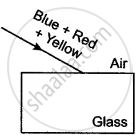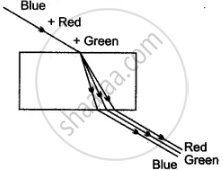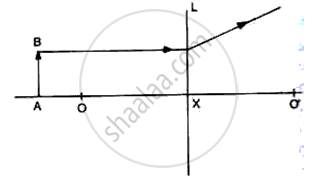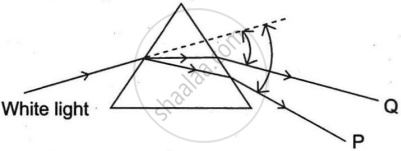Advertisements
Advertisements
प्रश्न
In the figure, a beam of light consisting of three colours blue, red, and yellow is incident on a prism and on a rectangular glass block respectively. Complete the diagram by drawings of the refracted and emergent rays.

उत्तर
The complete diagram is given below:

APPEARS IN
संबंधित प्रश्न
Why do the component colours of incident white light split into a spectrum while passing through a glass prism, explain
The colour of white light which is deviated the maximum on passing through the glass prism is:
(a) blue
(b) indigo
(c) red
(d) orange
The splitting up of white light into seven colours on passing through a glass prism is called:
(a) refraction
(b) deflection
(c) dispersion
(d) scattering
The coloured light having the maximum speed in glass prism is:
(a) blue
(b) green
(c) violet
(d) yellow
Which of the following colour of white light has the least wavelength?
(a) red
(b) orange
(c) violet
(d) blue
Refer to fig
(i) Name the lens L.
(ii) What are the points O, O' called?
(iii) Complete the diagram to form the image of the object AB.
(iv) Write three characteristics of the image.

If white light is used in same way what change is expected in the emergent beam?
State two properties of ultra-violet radiations which differ from visible light.
In the following diagram showing dispersion of white light by a glass prism, the colours 'P' and 'Q’ respectively are:

When sunlight passes through water droplets in the atmosphere it gets dispersed into its constituent colours forming a rainbow. A similar phenomenon is observed when white light passes through a prism.
Instead of sunlight, a green-coloured ray is passed through a glass prism. What will be the colour of the emergent ray?
